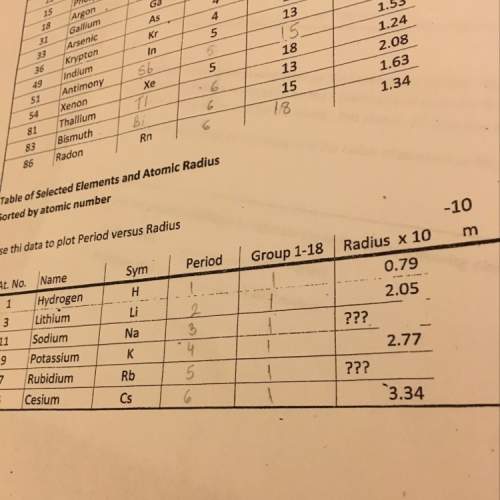
Chemistry, 22.09.2021 06:50, ernestscott406
Describe how IR spectroscopy might be used to monitor the progress of each of the following reactions. Choose the correct explanation. In an equation, the reactant has a SMILES string of C1CNCC=C1 reacts with iodomethane, C H 3 I, to yield a product that has a SMILES string of CN1CCC=CC1. The starting material is a secondary amine and is expected to produce a typical signal for an N―H stretch at around 4300 cm-1. In contrast, the product is a tertiary amine and is not expected to produce a signal above 2000 cm-1. The starting material is a secondary amine and is expected to produce a typical signal for an N―H stretch at around 3000 cm-1. In contrast, the product is a tertiary amine and is not expected to produce a signal above 3400 cm-1. The starting material is a secondary amine and is expected to produce a signal for an N―H stretch at around 3400 cm-1. In contrast, the product is a tertiary amine and is not expected to produce a signal above 3000 cm-1. The starting material is a secondary amine and is expected to produce a typical signal for an N―H stretch at around 4500 cm-1. In contrast, the product is a tertiary amine and is not expected to produce a signal above 4000 cm-1.

Answers: 2
Other questions on the subject: Chemistry

Chemistry, 22.06.2019 03:00, cheesecake1919
In the 1800s, one of the statements in john dalton's atomic theory was that atoms are indivisible. later experimental evidence led to the discovery of subatomic particles such as neutrons, electrons, and protons. what happened to the indivisible atom part of dalton's atomic theory, and why?
Answers: 3


Chemistry, 22.06.2019 19:30, gracieisweird12
Use the periodic table to find the molar mass of each element. molar mass h = g/mol molar mass s = g/mol molar mass o = g/mol
Answers: 3
Do you know the correct answer?
Describe how IR spectroscopy might be used to monitor the progress of each of the following reaction...
Questions in other subjects:

English, 02.12.2020 20:40


Mathematics, 02.12.2020 20:40


Mathematics, 02.12.2020 20:40


Advanced Placement (AP), 02.12.2020 20:40



Mathematics, 02.12.2020 20:40







